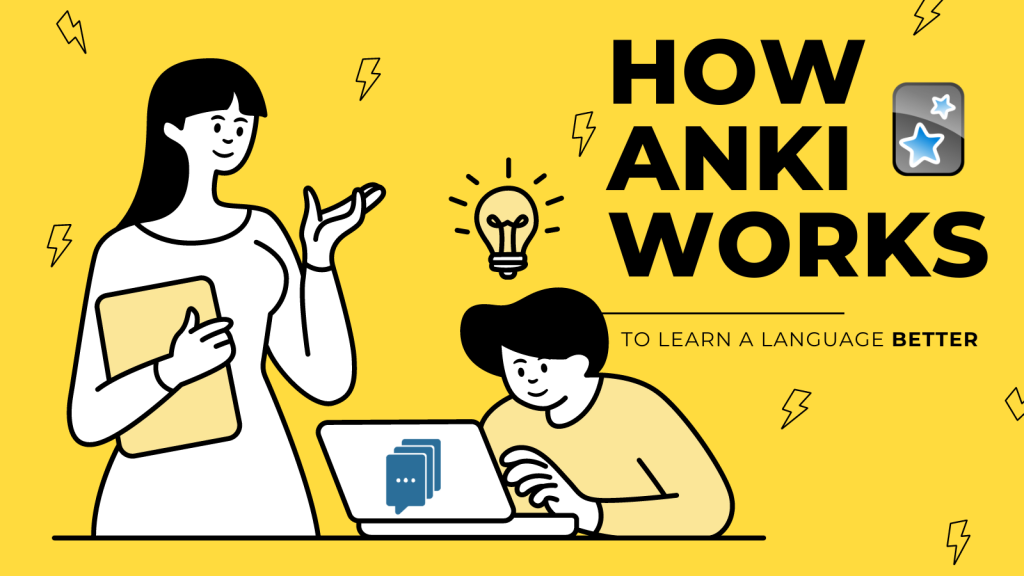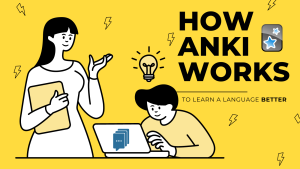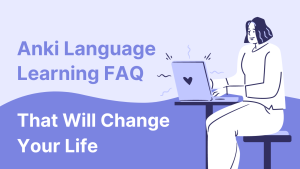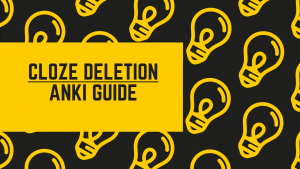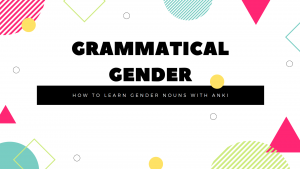Anki is a powerful tool for language learners that uses the science of spaced repetition to help you retain and recall new information. But have you ever stopped to consider exactly how Anki works?
In this article, we will dive into the details of how Anki helps you learn a language, including the steps of reviewing cards and the underlying algorithm that makes it all possible.
Whether you are just getting started with Anki or you have been using it for a while, understanding how it works can help you make the most of this powerful tool.
What is Anki
Anki is a flashcard program that utilizes the principles of spaced repetition and active recall to help users learn and retain new information.
The program is based on the idea that reviewing information at specific intervals is more effective for long-term retention than simply memorizing and reviewing all the material at once.
Combating the Forgetting Curve to Understand How Anki Works Better
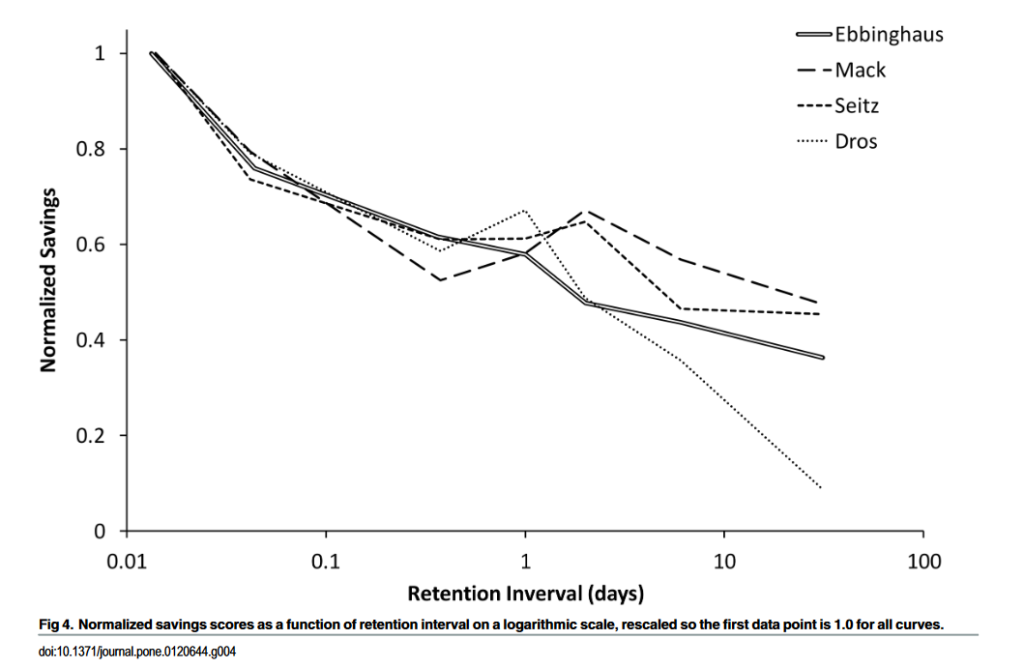
The forgetting curve, developed by Hermann Ebbinghaus in the late 1800s, demonstrates that without reviewing new information, we tend to forget it quickly. This influential memory model was explained in Ebbinghaus’ 1885 research report called “On Memory”.
The forgetting curve is a concept in psychology that explains the decline of memory retention over time. It suggests that the longer we go without reviewing information, the more likely we are to forget it.
The forgetting curve is especially true when learning a new language, as there is a lot of new information to remember and retain. For example, there are tens of thousands of foreign words, nuances in pronunciation that are different from your native language, several subtleties in grammar, plus numerous specialized phrases and idioms.
In 2015, researchers from the University of Amsterdam, attempted Ebbinghaus’ experiments again to check if his conclusions were still valid today. In a research paper called “Replication and Analysis of Ebbinghaus’ Forgetting Curve”, one subject spent 70 hours learning lists and relearning them after 20 min, 1 hour, 9 hours, 1 day, 2 days, or 31 days.
The results in these modern experiments are similar to Ebbinghaus’ original data. Again, they showed that we humans tend to forget new information quickly, including new words and foreign language features. So, reviews can be helpful to retain that new information.
Analyzing Anki’s Spaced Repetition Effectiveness
Anki helps to combat the forgetting curve through its spaced repetition system, or SRS for short.
Research on how Anki works has shown that spaced repetition, which is the basis of Anki’s algorithm, is an effective method for improving memory retention and language learning.
According to a study by Bjork and Bjork (2011) from the University of California, Los Angeles, the use of spaced repetition, such as the algorithm used in Anki, has been found to be effective in improving language acquisition and retention. The study conducted experiments and found that participants who used spaced repetition had better retention of learned material compared to those who studied the same material in a massed fashion. These findings suggest that Anki can be a valuable tool for language learners looking to improve their retention of new vocabulary and grammar concepts.
In another study titled “Spacing and Testing Effects” published in “The Psychology of Learning and Motivation”, the effectiveness of spaced repetition in learning vocabulary was examined. The research delved into various studies, consistently finding that participants utilizing spaced repetition demonstrated significantly improved retention of vocabulary compared to those employing conventional study methods such as cramming, simple rereading, or no study at all.
How Anki Works to Learn a Language
From the research on how Anki works, we now know that Anki uses the principle of spaced repetition, which is a learning technique that involves reviewing information at increasing intervals to help with long-term retention.
1. Make Cards Relevant to You
The process of using Anki for language learning begins by creating a deck of cards for language learning. You can create new flashcards in Anki that are relevant for your current language learning goals.
There’s also a way to speed up the process by using premade Anki decks for language learning, so that you have ready-to-use flashcards already set up in Anki.
Each of those language learning flashcards should have a prompt about the language you want to learn on the front side.
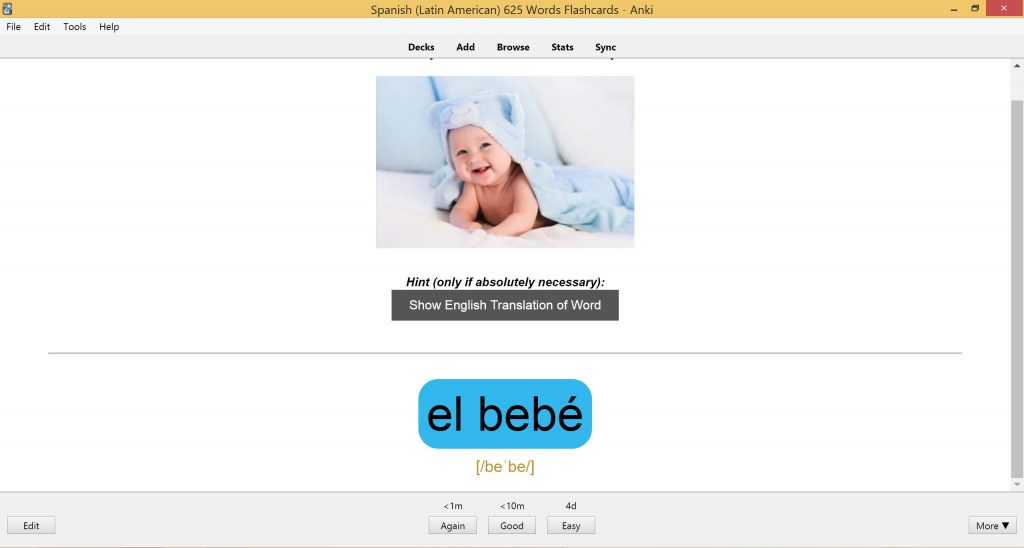
On the back side of those cards, you put the answer, along with relevant language information such as the translation, definition, audio, picture and other useful details.
In short, when you use Anki, you create digital flashcards with a question on one side and an answer on the other.
2. Active Recall: Study Cards to Test Yourself
When you first start studying with Anki, you will likely see a lot of new cards that you have not yet seen before. For each card, you have the option to rate how well you remember the answer. This is how Anki works. This rating helps the Anki app to determine the optimal time for you to review the card again.
This is all ties into Anki’s spaced repetition system. As you study each of your Anki flashcards with active recall, and you assess yourself by pressing the “Good” and “Again” buttons, then Anki’s spaced repetition system starts working its magic.
If you press the “Again” button in Anki for a particular flashcard, this corresponds with marking a card as “unknown”. So, this tells Anki that you are having trouble with that certain language flashcard. Then, Anki will schedule that card for review again in the near future so you can reinforce your learning.
On the other hand, if you press the “Good” button in Anki for a particular flashcard, this corresponds with marking a card as “known”. So, this tells Anki that you are confident with, and have already memorized, that certain language flashcard. Then, Anki will schedule that card for review in the more distant future, but not immediately. This allows you to retain the information without overwhelming you with too much new material.
3. Give Feedback to Get Personalized Study Sessions
A key component of Anki’s SRS is the feedback that you give to it by pressing the “Good” and “Again” buttons. This feedback is then used to adjust the intervals between reviews, ensuring that you are reviewing the material at the most effective intervals for retention.
This means that each of your review sessions become unique to you, according to the cards that you most need to review on a personalized level.
By consistently reviewing your cards and providing accurate ratings, you are effectively able to retain information better and hence, learn elements of a language better than traditional language learning methods.
4. Anki Stats to Improve Progress
In addition to reviewing cards, Anki also tracks your progress and provides statistics on your performance.
You can monitor how many cards you’ve studied, how many cards you have left, the average time you study per day, a forecast for due cards, and more.
These stats can be useful for identifying areas where you may need to focus more and can also serve as a motivator to keep you on track with your studies.
Final Thoughts: Anki is a Powerful Tool for Language Learning
Overall, Anki is a powerful tool for language learning because it helps you to actively engage with the material and reinforces your understanding over time. From the research on how Anki works, we can understand that Anki utilizes the principles of spaced repetition and active recall. Anki helps you to learn a language better and retain new information more efficiently.
